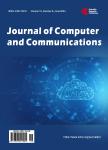The Deconvolution Method for Obtaining Correspondence in Data-Independent Acquisition Mass Spectrometry Data
The Deconvolution Method for Obtaining Correspondence in Data-Independent Acquisition Mass Spectrometry Data作者机构:College of Computer Science and Technology Shandong University of Technology Zibo China
出 版 物:《Journal of Computer and Communications》 (电脑和通信(英文))
年 卷 期:2024年第12卷第2期
页 面:11-25页
学科分类:081704[工学-应用化学] 07[理学] 08[工学] 0817[工学-化学工程与技术] 070303[理学-有机化学] 0703[理学-化学]
主 题:MS/MS Spectra XICs Correspondence Matrix Isotopic Peak Cluster
摘 要:Although data-independent acquisition (DIA) shows powerful potential in achieving comprehensive peptide information acquisition, the difficulty in determining the precursor m/z and distinguishing fragment ions has posed challenges in DIA data analysis. To address this challenge, a common approach is to recover the correspondence between precursor ions and fragment ions, followed by peptide identification using traditional data-dependent acquisition (DDA) database searching. In this study, we propose a cosine similarity-based deconvolution method that rapidly establishes the correspondence between chromatographic profiles of precursor ions and fragment ions through matrix calculations. Experimental results demonstrate that our method, referred to as CosDIA, yields a peptide identification count close to that of DIA-umpire. However, compared to DIA-umpire, we can establish the correspondence between original MS/MS spectra and pseudo-MS/MS spectra. Furthermore, compared to the CorrDIA method, our approach achieves higher efficiency in terms of time, reducing the time cost of the analysis process. These results highlight the potential advantages of the CosDIA method in DIA data analysis, providing a powerful tool and method for large-scale proteomics research.



